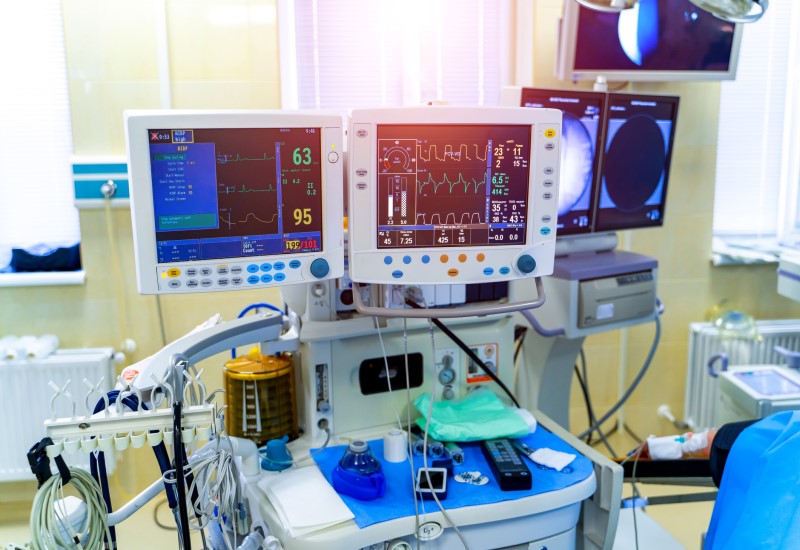






Which innovative business models and products support the digital pharmacy industry? How will this sector address pandemic-induced changes? What are the technological innovations, pricing, and consumer developments?

Analyze how VNA solutions enable healthcare professionals with single-point access to standardized and consolidated imaging data from PACS systems. Also, explore the three major segments by deployment models, component types, and end users.

What are the major challenges and growth drivers driving this sector? What are the technologically advanced devices increasing patient adoption? Explore segments like PAP devices, oxygen concentrators, spirometers, pulse oximeters, and more.

Transform Your Organization with the Right Communications Technology Partner and Turn Challenges into Opportunities
Disruption is not only unavoidable; it’s quite simply the “new normal.” Communications technology advancements, coupled with socio-demographic shifts such as the growing proportion of digital natives among consumers and the workforce, have transformed entire industries for the past couple of decades. However, it wasn’t until the recent pandemic that business models were disrupted on a massive scale. The widespread move to remote and hybrid workstyles wreaked havoc but created opportunities for organizations to rethink the way they operate and serve customers. Digital technology adoption skyrocketed in the past three years as business leaders strove to maintain worker productivity and effective customer engagement across expanded physical distances.
Schedule a dialog or email us at myfrost@frost.com to connect with an industry expert at no charge. We are taking unprecedented action to make our team available to help you cut through the media and politics to get factual one-to-one guidance for the issues and opportunities that matter most to your business.


Analyze economic uncertainties, rising costs, regulations, and more
Read more Request Info
What are the three categories of solutions in this evolving landscape?
Read more Request Info

Analyze the clinical workflows and business processes critical to improving patient outcomes
Read more Request Info
Explore the technological advancements boosting the adoption of IVF
Read more Request Info
Analyze the rising applications of POCT of cTn in emergency departments and remote locations
Read more Request Info
How beneficial is the adoption of virtual care or automation solutions like service robots?
Read more Request Info2022 was the year that saw rising demand for healthcare services, an increasing focus on preventative care and wellness, and greater collaboration between the public and private sectors in the Middle East region. With the increasing demand for personalized and specialty care and changes in healthcare regulation and policy, the region saw growing investments in digital health technologies (Cloud, 5G, IoT, and so on), value-based care, and an increasing focus on sustainability and environmental health.
Read more
Healthcare sector enjoyed its well-deserved prominence in 2022 with all round operational efficiency, expansion, and digitization gains across pharma, medtech, and delivery. From investments encouraged by PLI Scheme to improved access and affordability under Ayushman Bharat, the sector scaled new heights in 2022. In addition to burgeoning in-house innovation, India’s G20 leadership in 2023 will open new avenues for collaborative growth in the healthcare sector.
Read more
In vitro fertilization (IVF), one type of assisted reproductive technology (ART), is becoming more popular due to an increase in infertility rates worldwide, according to Frost & Sullivan’s recent analysis on the global in vitro fertilization services sector. Fertilizing the egg outside the body is the process of IVF, which is the most prevalent and effective form of ART and contributes more than 95% of the total ART revenue. The practice of freezing eggs, sperm, and embryos for IVF is becoming popular, which has significantly increased the demand for IVF services. The global landscape for IVF services is anticipated to grow significantly, with a compound annual growth rate (CAGR) of 20.46%, from $17.37 billion in 2022 to $43.97 billion in 2027.
Read more
Frost & Sullivan recently analyzed the healthcare cloud industry and, based on its findings, recognizes NetApp with the 2022 Global Technology Innovation Leadership Award. The company is a leading global platform-as-a-service healthcare cloud services provider that leverages its extensive experience and complete cloud solutions portfolio to accelerate innovation while unlocking the potential of the cloud and improving data protection. It increasingly adopts strategies to manage data efficiently, eliminates information silos, optimizes resources, reduces data center footprints, and leverages artificial intelligence (AI) to drive actionable insights.
Recently, Frost & Sullivan analyzed the real-world evidence (RWE) solutions industry and, based on its findings, recognizes Verana HealthⓇ with the 2022 North America New Product Innovation Award. The digital health company uniquely leverages its expertise to meet current unmet industry needs, cementing its leadership in the RWE solutions space. It delivers quality drug lifecycle and medical practice insights from real-world data (RWD), which is exclusively entrusted to Verana Health by key specialty medical societies, enabling it to manage de-identified data from more than 20,000 healthcare clinicians and more than 70 electronic health record (EHR) systems.
The traditional magnetic resonance imaging (MRI) approach is being disrupted by portable MRI systems, open design MRI systems, advanced metamaterials, and the integration of artificial intelligence (AI) and advanced software technologies. The rising demand for scans and a shortage of radiologists have compelled the development of novel MRI technologies that shorten scan times and aid radiologists’ decision-making. The increasing prevalence of cardiovascular diseases and cancer, combined with government initiatives to provide free or low-cost diagnostic facilities and infrastructure to citizens, is driving the overall growth of MRI technology.
Read more